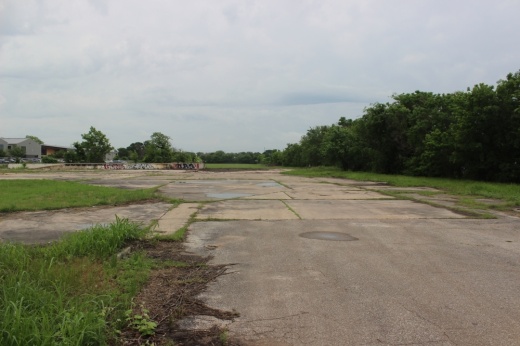Under a proposal from owner and applicant AUS Springdale, LLC, the rezoning of 1011-1017 Springdale Road to a planned unit development, or PUD, would facilitate the construction of a pair of office buildings, an adjacent parking garage and acres of green space at the former home of an array of petrochemical storage tanks. That use was found to have contaminated the surrounding land to the point that residential development still cannot occur there.
The Springdale Green PUD package has received some support from council and from residents given its development plan to maintain most of the property as an environmental restoration area containing a mix of forest, meadow and wetland space alongside the proposed office structure. That component of Springdale Green has been touted as one of its top benefits, alongside other financial and environmental commitments to the city and surrounding neighborhood by the applicant.
"Professionally and personally, this is one of the most innovative and ambitious ecological and sustainable projects I’ve ever seen in the Austin area that includes restoring close to 20 acres of environmentally-sensitive creek and floodplain areas," Daniel Woodroffe, president of the landscape architecture firm DWG providing services for the site's development, said during a June 3 City Council zoning hearing.
However, many area residents remain staunchly opposed to the project despite some of the benefits negotiated with its developer so far based on shared apprehensions over a proposed height change for the project's central offices. If approved with the requested increased height limit from 60 to 93 feet, Springdale Green would be home to one of the more prominent structures in the area, a fact that emerged as the main point of controversy from months of neighborhood-developer communication given worries over what the towers' construction could mean for the East Austin landscape.
“A 60-foot building adhering to compatibility standards shows respect for the neighborhood and a desire to integrate into it. A 90-foot building with no compatibility standards shows disrespect, and this project lines itself up with all the other projects that continue the exploitation, displacement and gentrification of people of color of East Austin," said Daniel Llanes, chair of the Govalle/Johnston Terrace Neighborhood Plan contact team.
That perspective was echoed by many area callers during the public hearing, as residents pointed to their overall willingness to support the Springdale Green PUD plan only if existing height restrictions remain in place. Most callers spoke on the indirect effects that a large office building could have on rising local housing costs and undesired changes in East Austin neighborhoods' character as the city's growth continues, with some also commenting on the layered effect of existing divisions set through zoning and the tank farm site's own history of contamination.
“I do think this will end up simply exacerbating a gentrification problem that we have in that neighborhood," said caller Matthew Caldwell. "This is just an opportunity for us to say if we want to accelerate that process or maybe put the breaks on, and I would feel for anyone who lived between two 93-foot tall complexes in their original homes. And that is kind of a cartoonish reality that could actually happen.”
In addition to the many residents speaking against the height limit increase, some neighbors called into the Thursday hearing to express their support for the project and its proposed community benefits—many of which applicant representative Michael Whellan said could end up being significantly reduced if the project is limited to four rather than six stories.
"We are offering a superior project and one that is supported by city staff, the Environmental Commission, the Planning Commission, and as you heard, the closest neighbors to the property," he said.
Among those benefits are hundreds of thousands of dollars committed to the city for affordable housing and parks maintenance as well as organizations such as the Workers Defense Project and East Austin Conservancy. More funding would also go towards sustainability items such as tree planting, invasive species management and stormwater capture—another item of resident interest and concern given existing local flooding issues.
Disagreement over the development's points of conflict also spilled into council's deliberations on the PUD approval June 3.
District 3 Council Member Pio Renteria repeatedly noted his desire to clear the rezoning through its second and third readings during the meeting and lamented past development opportunities in his district that had stalled out.
Renteria also engaged in a brief, heated argument with District 2 Council Member Vanessa Fuentes—which he later apologized for—after she pushed for the item's approval on second reading only to allow more time for community input. Renteria labeled her a "gentrifier" who "wasn't born here," and stated that not all change coming to the area represents a negative for East Austin residents. He also expressed disbelief that many participating residents would reach a compromise with the PUD applicant regardless of how long their communications continued, and said some who called into the June 3 hearing did not reside close enough to the Springdale property to represent that neighborhood's interests.
Council's discussion eventually moved to nailing down the details of the applicant's proposed benefits package and the language of the city ordinance that would establish the Springdale Green PUD. Officials voted to approve the item on second reading only 10-0, with District 6 Council Member Mackenzie Kelly off the dais, and are set to consider the final rezoning ordinance's approval June 10.





